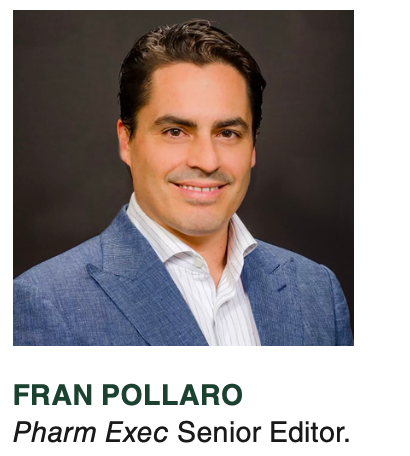- Sustainability
- DE&I
- Pandemic
- Finance
- Legal
- Technology
- Regulatory
- Global
- Pricing
- Strategy
- R&D/Clinical Trials
- Opinion
- Executive Roundtable
- Sales & Marketing
- Executive Profiles
- Leadership
- Market Access
- Patient Engagement
- Supply Chain
- Industry Trends
Are Tighter Health System Policies for Sales Reps Looming?
What the rising rate of physician-hospital affiliations means for pharma.

In late June, consulting firm Avalere released a report that detailed trends in physician employment and one of the key findings was surprising and very significant: 70% of all physicians are now employed by hospitals, health systems, or corporate entities. Raghu Reddy, chief administrative officer at the SurgCenter of Western Maryland, LLC, an ambulatory surgical center, thinks that figure is “consistent with percentages in rural areas, where physicians are more independent, but it’s close to 75% to 80% in most urban markets.” The American Medical Association started tracking these metrics in 2012, and up until 2020, the number of physicians affiliated with hospitals was less than 50%. Growth is now exponential, and the trend is likely to continue.
Why is the acceleration so drastic and how will this affect pharma sales efforts? The number of stakeholders in any hospital, health system, or corporate entity is large and which ones to call on varies within each, as do their goals and interests. Sure, the aim should always be keenly focused on patient outcomes, but there are always stakeholders focused on economics, and behind them those focused on policy ( e.g., the recent Inflation Reduction Act).
Let’s address the rate of acceleration first. If you’re a recently graduated medical school student navigating internships, residencies, and fellowships, you’re likely facing significant student debt. In fact, reportedly, 73% of med school graduates have an average debt of $203,062. As a future physician, when considering options, you quickly discover the challenges inherent in today’s private practice management: declining pay rates from Medicare, Medicaid, and commercial insurers (they’re paying hospital systems first and promptly); increasing administrative burdens like coding and prior authorization; lack of negotiation leverage in insurer contracts; recruiting challenges; difficulty in collecting and analyzing population-level data; and IT costs and lack of support, among other obstacles. Many physicians that choose private practice do so because they’ve inherited it from a parent or relative.
While you can certainly make more money in private practice, average salaries are comparable. The decision ultimately comes down to the health system proposition of risk aversion, security, and stability under multiple stakeholders. Or one chooses autonomy and the simple doctor-patient relationship, rife with challenges. It’s safe to say hospitals, health systems, and corporate entities are currently more appealing.
There are a few factors and hypotheticals to consider.
Most physicians who work for these entities still have independent offices outside of the hospital and in many cases, the patient may not even know that the physician is affiliated with a health system. Additionally, most physicians’ offices or hospitals don’t restrict pharma reps from entering. However, some large health systems like Kaiser, for example, don’t allow pharma sales reps into their offices. How restrictive will health systems’ policies regarding manufacturers become?
I asked Lauren D’Angelo, chief commercial officer at Alpha Cognition, what she thought would happen if this trend continued upward and approximately 90% of physicians became employed by health systems.
“It really depends on how restrictive they are on the physicians, and how much control they enforce as it relates to prescribing medications,” she says. “If a health system penalizes physicians for prescribing medications that are not on their formulary, then it may be an uphill battle, and you could see a shift in how reps market to those physicians if their product is not on formulary. They may reduce their efforts or not even target those physicians at all.”
D’Angelo notes that many academic institutions have forbidden sales forces or samples for quite some time. “If the health systems start putting similar restrictions in place, it could be challenging for the manufacturer,” she says. “You would probably see a lot of marketing efforts shift to digital, conference education, and KOL presentations.” It’s also becoming apparent that access teams will likely have an even larger role in the future.
Reddy doubled down on conference education, saying it would expand even more, especially considering how little time reps are getting with healthcare providers, and with digital and social gaining significant momentum: “If there’s a new drug that’s wonderful and isn’t a ‘me-too’ product, it will draw a lot of attention no matter which method of advertising is employed,” he says. “But I really think what gets the most attention is the presentation on a particular product at a conference, even with the marketing piece removed and presented in an unbiased way.”
Fran Pollaro is Pharm Exec's Senior Editor. He can be reached at
fpollaro@mjhlifesciences.com.

Transforming Cancer Care: Data, AI, and Patient-Centered Care
July 20th 2023Join us as Mohit Manrao, SVP and head of US oncology at AstraZeneca, shares his patient-centered approach to transforming cancer care, bridging the gap between innovative science and tangible patient outcomes across all populations on a global scale.
